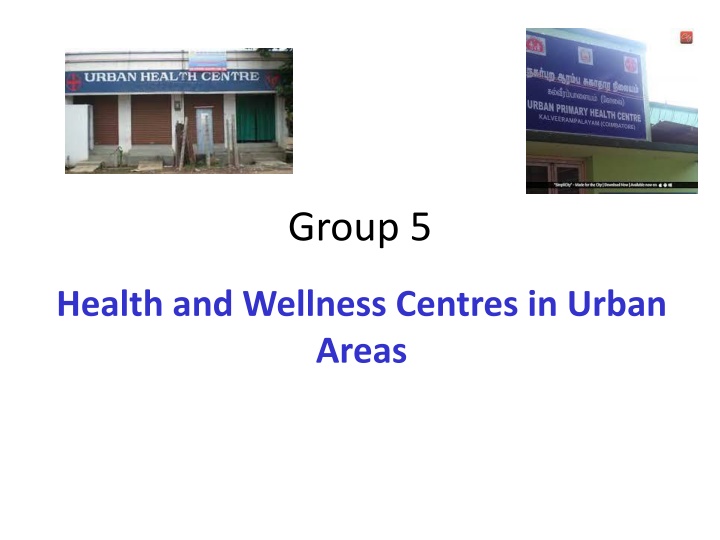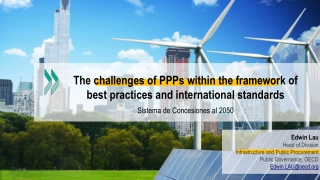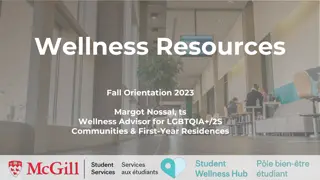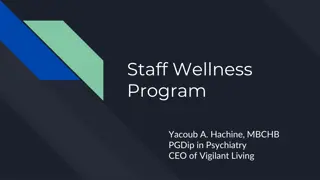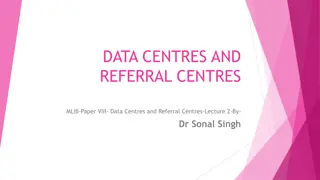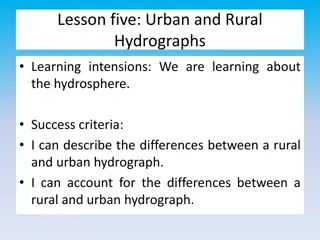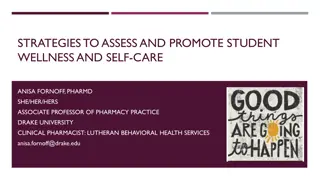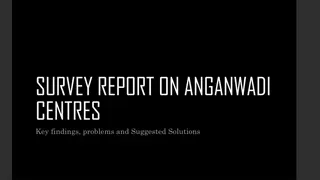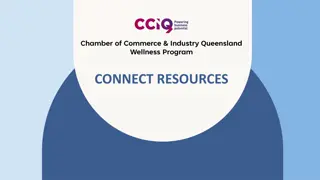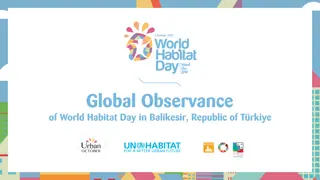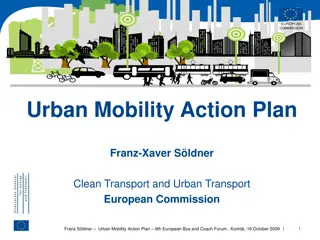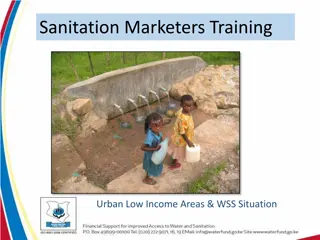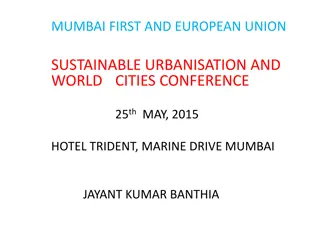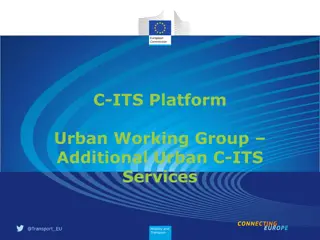Health and Wellness Centres in Urban Areas - Group Composition and Infrastructure
Explore the composition of health centres in different states, HR inputs, training programs, and infrastructure recommendations for urban areas. Emphasizing adequacy, competencies, and outreach mechanisms for effective healthcare delivery.
Download Presentation

Please find below an Image/Link to download the presentation.
The content on the website is provided AS IS for your information and personal use only. It may not be sold, licensed, or shared on other websites without obtaining consent from the author.If you encounter any issues during the download, it is possible that the publisher has removed the file from their server.
You are allowed to download the files provided on this website for personal or commercial use, subject to the condition that they are used lawfully. All files are the property of their respective owners.
The content on the website is provided AS IS for your information and personal use only. It may not be sold, licensed, or shared on other websites without obtaining consent from the author.
E N D
Presentation Transcript
Group 5 Health and Wellness Centres in Urban Areas
Group Composition Different States Odisha (UPHCs 50,000) Assam Delhi (UPHCs 25,000-85,000) Goa Telangana (use of ANMOL IT in all districts) Kerala Uttrakhand (no UPHCs in hilly areas)
1. Inputs for HR/ Training/Equipment Group decided we shall deliberate on already existing UPHCs and existing HR Whether norms are achieved or not; IPHS norms, NUHM framework (2 MOs , 5 ANMs, 20 ASHAs, 1 LT, Pharmacist, DEO) Debate whether counsellor should be there; enhance counselling skills of existing staff Fixed day specialists- like for Psychiatry Timings for functioning of UPHCs Early morning (8 to 11) and late evening (5 to 8 pm) Kerala 8 to 8 pm
Training and enhancing competencies Training in all 12 points- skillsets and competencies are required (7 to 12 of package of CPHC) Soft skills training- handling clients with dignity and respect so that assured services are provided and people seek health care and affects their health behaviour Trainings in areas of CPHCs some areas like geriatric care, palliative care Kerala- 2 sets of trainings- One concept based preventive curative palliative- 2 days Skill training- addressing the components- 3 days
Infrastructure Expansion of space and upgradation Nearby schools / Community areas can be done- Yoga Minimum space should be recommended- minimum no. of rooms- 6- waiting space (IEC space), registration area, OPD, pharmacy, LT diagnostic, toilet, ANM, internal examination/ injection room, Meeting cum yoga/activity room, Store (Non delivery point), one room for specialist areas MMU- slum dwellers/ construction workers Government buildings Rented premises
2. Adequacy of existing outreach mechanism linked to UPHC Largely for Slum population Depends on how easy/ difficult to reach More staff when expanded package is there Urban Areas One Male MPW in addition to ANM for 10,000 (supported by centre)- 2 MPWs required: flexibility to states as expanded role and functions Volunteers can be roped in- like in Kerala- Arogya Sena utilized for filling CBAC
3. Roadmap for scaling up HWCs/ UPHCs States where PHCs are not there per 50,000- structures are needed and can be taken up subsequently Where 50,000 population is not there- MMU should be there and staff should be trained on continuous basis- smaller clusters
Criteria for scaling up Infrastructure and other requirements are met- go in first phase Choice will be aspirational districts/ disease burden wherever it is possible high focus Sub-district: Better equipped, civil infrastructure and manpower and managed well with other available NCD tertiary care Districts where ANMs are given ANMOL Odisha has 13 districts, Telangana has all districts
4. Issues of space for UPHCs Urban local bodies dispensaries; Urban development Public Sector Undertakings, municipal bodies, ESI, NGO, RWA, CSR funds, Non for Profit, Faith Based Organizations Rented NUHM supports the rent Mapping of all facilities, local areas- availability of spaces/ settings for various activities
5. Possible Partnerships HR partnerships- Specialists- Part time on a fixed day Private/ Public Funding Space Laboratory- outsourcing of lab diagnostics NGOs Other Government bodies for community mobilization , self help groups and faith based organizations School and education authorities Population based health services by NGO / PPP model Medical Colleges- Capacity building trainings
6. Team composition needed in urban areas Additional HR- MPW M Specialist Data entry IT/ technology
7. Fund requirement Funds are required for Civil Training Team based incentives Enhanced diagnostics A major portion will be needed for drugs
8. Strategies for population enumeration Community Based Assessment Survey (CBAC) Risk Behavior Volunteers / Field workers Incentive ASHA updates diary Screening has to be done by ANM Comprehensive and integration with other programmes- TB, leprosy Reorganization of ASHA household work- only for slum areas In affluent areas- drawn from same communities Screening at workplaces Incentive Person for Rs 10 Electronic Health Records
Population enumeration Sarva Skisha Abhiyaan- Ward Education Volunteers Validation of data incentivized DM and issues an declaration- society has to give details
